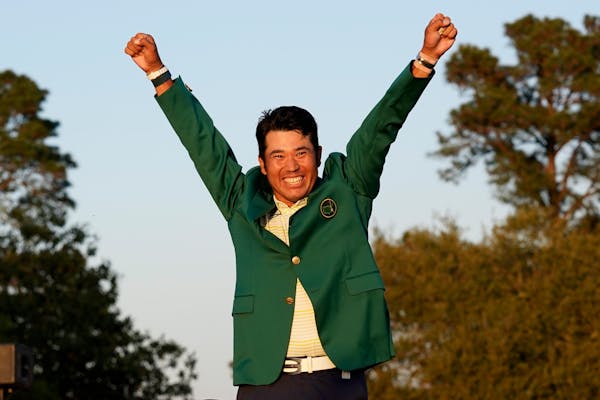AUGUSTA, GA. – Why the Masters is the world's greatest golf tournament:
1. Sheer beauty. Augusta National Golf Club is beautiful everywhere you look, from the white cabins to the pink azaleas, from Amen Corner to the walking path along the second fairway. It's hard to imagine a prettier setting that doesn't feature an ocean.
2. Permanence. Augusta National isn't the only beautiful golf course in the land, or the world, but when the other majors are held, they become cities of large, white tents. At the Masters, the gift shop is nicer than Tiffany's and the press building looks like a billionaire's mansion.
3. Climate. The U.S. Open and PGA Championship, often held in hot months in hot locales, can melt you. The Masters usually means a week of pleasantly warm weather amid shade trees. It's the perfect introduction to spring.
4. Elevation changes. Watch the Masters on television and it looks relatively flat. It isn't. One of the reasons the course is so tricky is that players have to hit off uneven lies to undulating greens, and you have to be here to understand just how uneven and undulating the course is. The 10th fairway could be used as a ski slope. The second is straight downhill. The 14th and 17th require drives straight uphill. One of the reasons Bryson DeChambeau has struggled at the Masters is that he believes in calculations, but uneven footing and swirling winds make science worthless. You have to feel it.
5. The practice facility. Young players have to learn not to burn themselves out on the practice grounds, because the grounds are — yes, that word again — beautiful, but also almost too inviting.
6. Mystery. The Masters is known for the quality of its champions. The two most accomplished golfers of all time, Jack Nicklaus and Tiger Woods, won it a combined 11 times. Analysts will note that the course favors certain kinds of players, but just about anybody who plays well can win here. Short players (Mike Weir, Zach Johnson) and tall (Dustin Johnson). Righties and lefties. Those with years of experience on the course and those without (like Woods in 1997). Long hitters and short (like Zach Johnson). Of the past six champions, the only one who could have been easily predicted was Dustin Johnson last year.
The course rewards greatness writ large, and greatness packed into one week.
7. Eagles. Augusta National is one of the world's great risk-reward course, which makes for an interesting tournament. All four par-5s are reachable, and the two on the back nine carry risk. That's why the old saying "the Masters doesn't begin until the back nine on Sunday" is often relevant. Most players atop the leaderboard could either eagle the 13th and 15th or bogey them, and that kind of swing in the scoreboard can make or break them in the tournament.
Hideki Matsuyama likely won this year's tournament with his eagle on No. 15 on Saturday.
8. Amphitheaters. I've been to a lot of tournaments where, if you don't set up early at a hole, you're lucky to see a key green. The Masters has natural amphitheaters where you can sit on a hillside and see the 15th and 16th greens and the 17th tee, or the 11th green, 12th hole and 13th tee box.
9. History. No matter how the golf ball or equipment has changed, we still see players standing over shots rich in history. The 16th is where Nicklaus made that putt and Tiger made that chip. The 13th and 15th are the places where so many players have gone for the green, whether holding a 3-wood or 9-iron. Every player speaks of watching the Masters on television as a kid and having watched the greats attempt those shots.
10. Roars. Because the tournament is held on the same grounds every year, and because of the rolling hills and intimate layout, when the crowd roars from the other side of the course, you can tell what has happened. There are hole-in-one roars, eagle roars and Tiger roars that are like nothing else in golf.
Jim Souhan's podcast can be heard at TalkNorth.com. On Twitter: @SouhanStrib. • jsouhan@startribune.com

Souhan: Jones isn't the best Vikings running back, but he might be the most likeable

Cashman is back, and he's money against the Jaguars

Souhan: The Sam Slide is here. How will the Vikings handle it?


